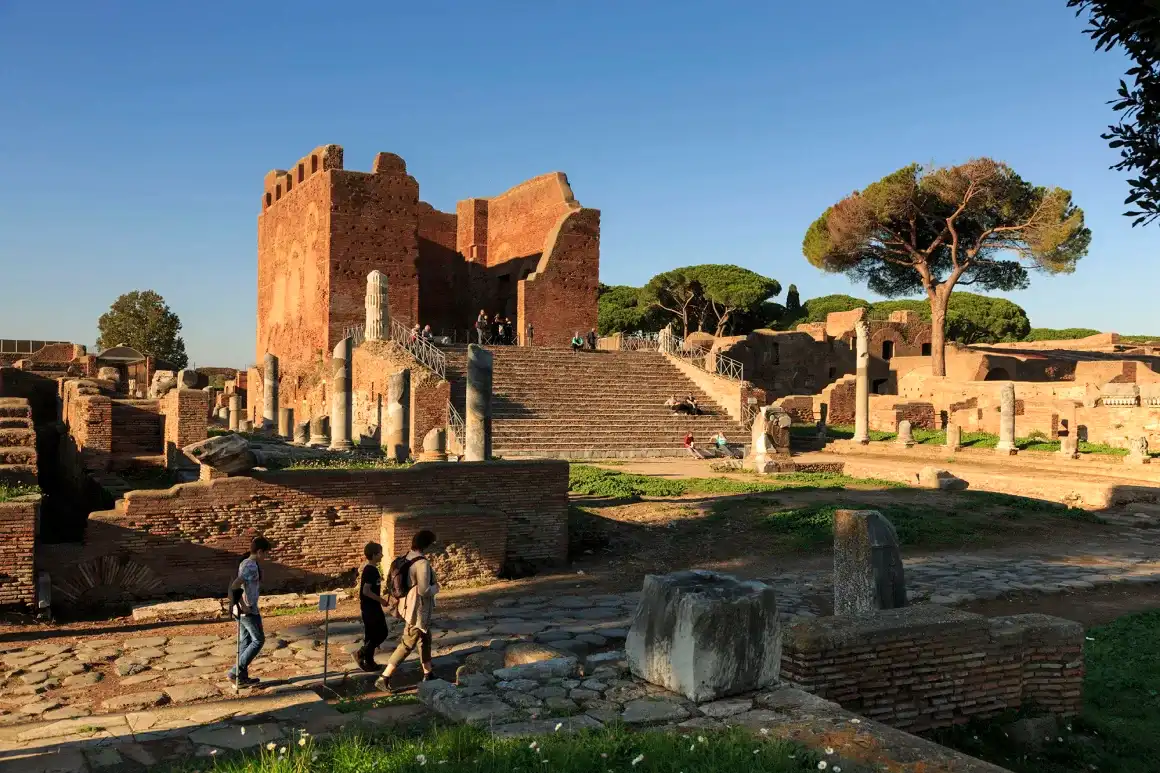A remarkable archaeological discovery near Rome has revealed a Jewish ritual bath — or mikveh — within the ruins of the ancient Roman port city of Ostia. Experts say the find is the oldest of its kind located outside the biblical territories of Israel and its surrounding regions, offering an unprecedented glimpse into the reach and resilience of Jewish life during the Roman Imperial period.
A Ritual Bath in the Heart of Ancient Rome
The mikveh was unearthed during recent excavations at Ostia Antica, a city located just 16 miles from Rome that once served as the Empire’s first colony and a key maritime hub. The ritual bath, used in Judaism for ceremonial purification, is thought to have been supplied with natural spring or rainwater, in line with religious law.
Architectural and Religious Significance
Steps lead down into the structure, which is tucked within a small room of the ancient Ostia Synagogue — itself believed to have been built toward the end of the 2nd century AD. The mikveh is framed by columns and adorned with blue plaster and decorative shells, offering both functionality and a touch of elegance.
“This is an absolutely extraordinary discovery,” said Alessandro D’Alessio, director of the Archaeological Park of Ancient Ostia. “Until now, no Roman mikva’ot had been found outside of Judea, Galilee, or Idumea. This confirms the deep-rooted presence and cultural importance of the Jewish community in Ostia during the Imperial age, and likely even earlier.”

A Crossroads of Cultures
Italy’s Minister of Culture, Alessandro Giuli, echoed this sentiment, describing the find as symbolic of the multicultural fabric of ancient Roman civilization. “The discovery of this mikveh confirms Ostia as a historic crossroads of cultural exchange and coexistence, a city that embraced tolerance within the Roman world,” Giuli said in a statement.
Other Artifacts Found at the Site
Alongside the mikveh, archaeologists uncovered a collection of small statues, marble fragments, and other significant relics. Among the standout finds were a lamp bearing the image of a menorah and palm branch, and a well-preserved glass goblet — both dated between the 5th and 6th centuries AD. These items further reinforce the narrative of a thriving Jewish presence in Ostia over multiple centuries.
Ostia: A City Frozen in Time
Initially founded as a naval base, Ostia’s ruins have been remarkably well preserved thanks to layers of protective sand dunes. Sometimes likened to Pompeii in terms of archaeological richness, much of Ostia remains buried — with only around one-third of the city excavated to date.

Excavation Efforts and Historical Context
Excavations began under the regime of Benito Mussolini but were halted during World War II. Sporadic digs resumed in later decades, with a new wave of research launching in 2022. This latest effort is a collaboration between the Archaeological Park of Ancient Ostia, the University of Catania, and the Polytechnic of Bari, focused on two key areas of the buried city.
As per Jewish law, the mikveh had to be filled with naturally sourced water and deep enough to allow for full-body immersion. “It adheres to all the religious criteria,” confirmed D’Alessio, who emphasized the importance of the site’s preservation and study.
Calls for Public Access and Preservation
Alfonsina Russo, head of Italy’s department for the promotion of cultural heritage, urged that the mikveh be made publicly accessible as soon as possible. Her sentiment was echoed by Riccardo Di Segni, the chief rabbi of Rome, who called the discovery “a precious addition to the history of Roman Jewry.”
“This find not only enhances our understanding of Jewish life in ancient Rome,” Di Segni said, “but also highlights the care taken to preserve tradition even far from its birthplace. The mikveh is both functional and refined — a testament to the cultural depth of this historic community.”
With ongoing efforts to restore and open the site to the public, this extraordinary find is poised to become a vital piece of Rome’s cultural and religious mosaic, connecting modern observers with a long-overlooked chapter of the city’s ancient history.





